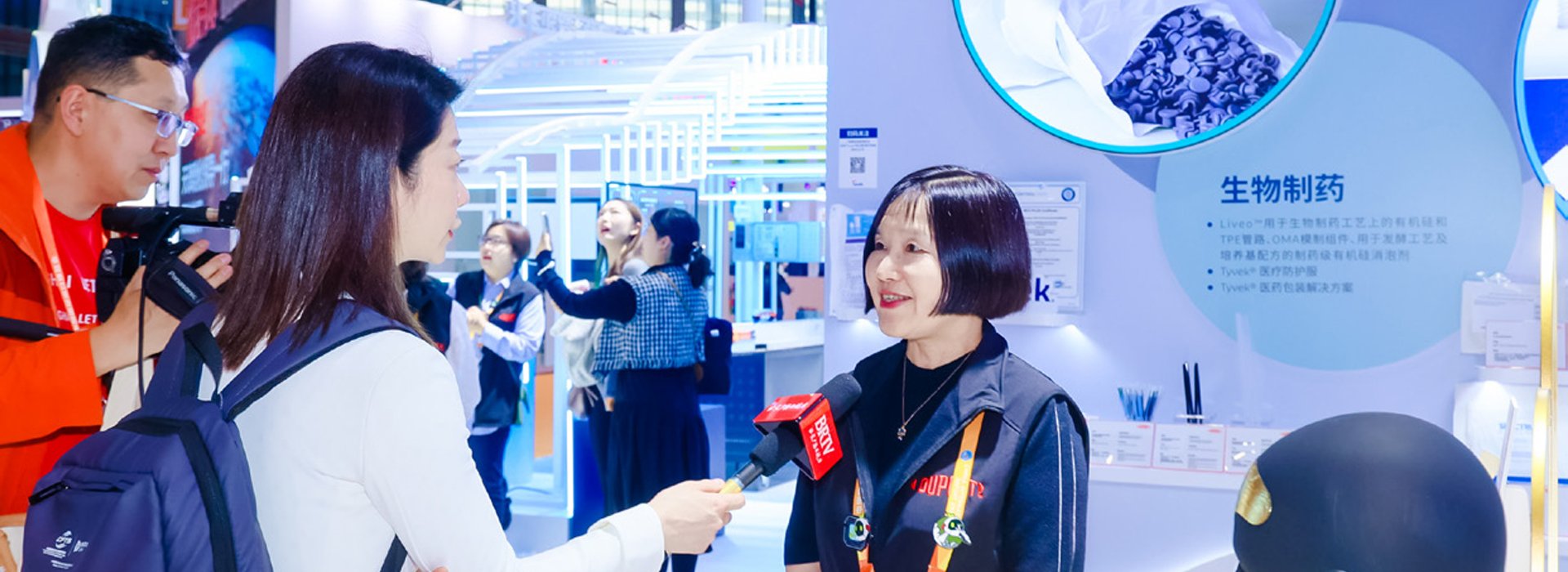Dr. Linda Wu: Embrace courage and focus on continuous improvement
At the intersection of science and innovation, Dr. Linda Wu has dedicated over two decades to pushing boundaries with relentless curiosity and passion for innovation. Her mission is to translate science into innovation that can make meaningful societal impact. From photovoltaics to electronic materials, from R&D to sustainable transformation, Dr. Wu embodies the ethos of “Science for Good”.


Dr. Linda Wu
DuPont Shanghai Innovation Center
Leader and Electronics & Industrial China
Technology Manager
She believes that true breakthroughs come not from chasing perfection, but from the exploration of the unknown and the courage to improve continuously—“Perfection is the enemy of good.” This mindset fuels her passion for building high-performing, busy yet happy R&D teams, achieving a remarkable 5-year zero attrition rate. She is dedicated to nurturing future leaders and empowering women to lead boldly in innovation-driven industries.
Q.
How did you start the journey of innovation? How has innovation influenced your career choice and decision-making?
After obtaining my Ph.D., I pursued an international career, spending about 8 years in Europe. In 2007, I returned to China and joined DuPont Central Research and Development, naturally took on technical roles. I have since dedicated 18 years to the company.
My initial focus upon returning to China was the photovoltaic (PV) sector, which was then entering its remarkable ten-year fast growth phase. By around 2010, China had become the global top 1 player in PV panel production and went on to become the world’s largest PV installation country in 2013. It was thrilling to be part of this sunrise industry, leading a sizable R&D team driving for innovation.
My role later transitioned from central R&D to business-facing R&D, where I assumed leadership of a significantly larger team. While my initial focus remained on PV, it gradually expanded to include electronic materials. I am currently dedicated to the Electronics & Industrial division, where my work encompasses both electronic and industrial materials. It can be said that my journey in innovation has unfolded naturally.
Q.
Could you share your insights on sustainability based on your expertise and current role?
From the perspective of the technology development cycle, 2020 is globally regarded as the dawn of a new era marked by sustainability, artificial intelligence, the Internet of Things, robotics, and drones. At DuPont, innovation, digitalization, and sustainability are core pillars of our corporate strategy. As a leader of technology, about half of my daily work involves sustainability.
Over 80% of DuPont’s innovation portfolio is expected to deliver sustainability value. As a R&D leader, a significant part of my role involves planning the emission reduction potential of our future products. We also must consider how to engage customers, society, end consumers, and the entire value chain to collectively lower emissions. This is because carbon emissions extend beyond direct production-related outputs—they also encompass indirect emissions under Scope 2 and Scope 3, both of which are critical. In particular, Scope 3 accounts for emissions across the entire product life cycle.
It is relatively easy to manage direct carbon emissions, but addressing Scope 3 demands deeper expertise, greater effort, and stricter requirements. This is especially true for our material industry, which falls under the general category of hardware that contributes significantly to final product performance, reliability as well as sustainability. Therefore all R&D scientists and leaders must be very cautious throughout the R&D process.
Q.
How is innovation generally perceived in the industry today? And how do you personally define it?
Innovation extends beyond creating a new chemical substance or product in the lab —it should be viewed from a broader perspective. From a technical standpoint, developing more and new applications is becoming increasingly important. Why? As we recognize the risks inherent in the field of new chemical materials, every emerging substance must undergo rigorous assessment now to determine its potential impact on human health and the environment.
In this context, enhancing the performance of well-established materials with advanced technologies—materials that have undergone years of rigorous safety assessments—and expandingtheir applications across broader fields can be even more beneficial to industries and society. This is the essence of applicationcentric development, a crucial aspect of innovation. In fact, over the past decade, I believe application-driven innovation has become more important than the invention of new chemical substances or polymers, and it also contributes to sustainability. Take nanotechnology for example, which has surged in prominence over the past two decades. At its core, it involves reducing the size of known substances to unlock unique properties. Silver, for instance, typically melts at 962°C, but when reduced to the nanoscale, its melting point drops to approximately 200°C, which is remarkable.
Successful application-driven development requires material scientists to cultivate interdisciplinary expertise. They must go beyond chemistry and materials science to deeply understand the specific application scenarios of their materials. For example, if a material is intended for use in engines, scientists need a basic understanding of engine structures and must collaborate closely with engine engineers.
This is crucial – while electrical and mechanical engineers bring deep systems knowledge, material specialist can help refine performances by identifying the optimal material needs for each application. The most effective solutions emerge when both disciplines combine their strengths to identify the true needs and pain points; then work out the innovative solutions together.
Beyond technology, innovation can also occur in business models and processes. As a key enabler, digitalization and automation is also a form of innovation. We believe these are all part of a broad vision of innovation, which should not be narrowly defined solely from a technical perspective, especially in today’s society.
Q.
Could you share your perspectives on business practices where technology and innovation contribute to sustainability? Can you provide some examples?
I’d like to illustrate with a beauty facial mask product recently developed by DuPont team in Shanghai. As a company with a 70-year legacy in healthcare innovation, DuPont has an established silicone gel technology for scar treatment.
The International Advisory Panel on Scar Management identifies only two evidencebased effective scar treatments: steroids therapy and silicone gel sheet. Silicone gel sheet functions as a protective second skin layer, providing hydration while maintaining the skin’s natural breathability, which are medically recognized benefits for improving scar healing. Its moisturizing effect sparked our exploration of its potential for enhancing cosmetic outcomes too, such as brightening and anti-aging.
To test this hypothesis, we started to investigate other potential applications of silicone gel products. The result was DuPont™ Liveo™ Silicone Beauty Patches, which made its global debut at the 2024 China International Import Expo and is now in mass-production and available on the market.
This case exemplifies how technology unlocks new opportunities, not only through technical innovation and application development but also through business model innovation. While DuPont has traditionally excelled in B2B model, expanding into the B2C sector requires a shift in business model that emphasizes partnership with downstream players.
Through this model, DuPont provides technology and training programs, while our downstream partners oversee production, marketing, and direct consumer engagement.
Q.
In the process of value creation, how do corporate culture, leadership, and communication play a role?
It is often said that good companies are managed through processes, but exceptional companies are united through cultural cohesion. At DuPont, our enduring culture is deeply rooted in four core values: Safety and Health, Protect the Planet, Highest Ethical Behavior, and Respect for People. These are guidelines for our business practices ingrained into every employee.
With innovation at its core, DuPont positions itself as a science company instead of a manufacturer. This innovation-driven ethos makes fostering a culture of creativity non-negotiable. Since innovation inherently involves uncertainty, our culture must embrace this unpredictability as we embark on new projects.
Consulting firms have conducted studies showing that technical reasons account for less than 30% of project failures. We don’t penalize teams working on “dead” projects. Instead, we encourage them to identify issues early and discontinue unfeasible projects promptly.
Every Halloween, DuPont celebrates Dead Project Day, where employees dress up in costumes to commemorate the projects that didn’t come to fruition that year. Embracing project failure, without blame or complaint, reflects what we call Cultural Wisdom.
Q.
As a leader and a pillar of society, what aspirations do you hold for yourself in the future?
Innovation will definitely remain my pursuit, but I also dedicate significant time to developing my team. No matter how strong an individual’s capabilities are, time and ability are still finite. Building a team that unlocks collective potential and empowering them to generate more ideas, achieve technical excellence, and drive business success is the legacy that I strive to enable for the company.
In terms of team building, I’ve also gained valuable insights. Despite China’s hyper-competitive job market, I’m proud that the R&D team under my direct leadership has maintained a remarkable 0% attrition rate over the past five years. This highlights the critical role of effective team leadership, a skill that all technical leaders must master.
Another priority of mine is empowering more female leaders and professionals to boldly pursue careers in innovation-driven industries. We often encounter female college and graduate students who fear they lack the same “stamina” as their male counterparts in the long run. However, the fact that DuPont’s CEO, CTO, and CFO are all women proves that women can achieve great success in this sector.
From my own observations, women in the workplace often set excessively high standards for themselves and overthink their job choices. For example, a consulting report I read reveals that men tend to apply for job openings when they meet 50% of the requirements listed in the job description, while women often wait until they are nearly 100% ready. I encourage women to be more courageous in the workplace. As the saying goes, “perfection is the enemy of good.” We don’t need to overdo things or strive for perfection in everything. Rather, embracing courage and focusing on continuous improvement is a far better mindset.
I’m increasingly convinced that women can make great leaders in large corporations because they are good at “Head, Hands, and Heart”, DuPont’s leadership factors, which respectively represent strategizing, executing, and inspiring. Women have strong natural advantages in leadership, so I encourage female leaders to overcome hesitation and embrace boldness, just as their male counterparts do.
Interdisciplinary expertise, I encourage young people to leverage modern learning tools to explore adjacent fields while mastering your core disciplines.